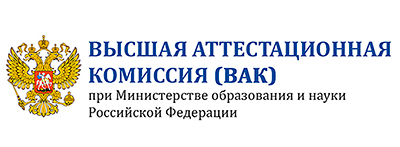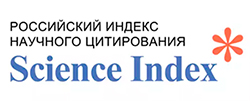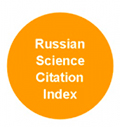Birthdays as a source of excess mortality: cause of death composition
Abstract
Problem statement. Previously it was shown that in Russia and in the world, holidays are accompanied by an increase in mortality, mainly at Christmas and New Year’s. But what about diagnoses of the excess mortality due to birthday celebrations?
Material and methods. To assess this, the data of 16.77 million deaths from 01/01/2011 to 12/31/2019 were examined for a possible correlation between birth and death dates. In all cases, the dates of birth and death were given the number of the day of the year. If these numbers coincided, the death case was assigned a value of 0, and if they did not - the number of days of the difference with the birthday before or after this day, from ± 1 to ± 182. This procedure was performed both for mortality in general and for 6 large classes of deaths and 8 types of external causes. Excess deaths on birthdays were estimated using the LOWESS moving average (locally weighted polynomial regression), which described non-holiday mortality, and on holidays its breaks were filled with linear regression, which served as an indicator of “natural” non-holiday mortality on holidays.
Results. A significant increase in birthday mortality was revealed (4.0 thousand per day for 9 years), and the total excess death rate associated with birthdays was 19.7 thousand, or 3.5% of "natural" mortality. The main contribution to excess mortality was made by diseases of the circulatory system (9.1 thousand) and external causes (5.2 thousand), and among external causes, by suicide (1.3 thousand), alcohol poisoning (1.0 thousand) and injuries with undetermined intent (0.8 thousand). Excess deaths on birthdays were proportional to non-holiday deaths, with the exception of alcohol poisoning, which was twice the expected number of deaths. The peculiarity of suicides is that the increase in their number begins two months before the birthday, with a maximum at 35 days, followed by a decrease and a sharp increase on the birthday. Further suicide mortality is cyclical, with peaks at 7 and 15 days after the birthday. Comparison with other holidays showed that birthdays, in terms of excess mortality, occupy an intermediate position between the New Year and other public holidays. The main factor in excess mortality on holidays is the abuse of strong alcoholic beverages.
Conclusion. Birthday celebrations, like public holidays, are accompanied by an increase in mortality. Furthermore, it is easy to assume that the loss is not limited to mortality: there are many more people who fall ill on their birthday than those who die on the occasion.
Downloads
References
Abel E., Kruger M. (2009). Mortality Salience of Birthdays on Day of Death in the Major Leagues". Death Studies, 33 (2), 175–184. DOI:10.1080/07481180802138936 .
Ajdacic-Gross V., Knopfli D., Landolt K. et al. (2012). Death has a preference for birthdays—an analysis of death time series. Annals of Epidemiology, 22(8), 603–606. DOI:10.1016/j.annepidem.2012.04.016
Anderson M. (1975). Relationship between month of birth and month of death in the elderly. British Journal of Preventive & Social Medicine, 29(3), 151–156. DOI:10.1136/jech.29.3.151 .
Bovet J., Spagnoli J., Sudan C. (1997). Mortalité et anniversaire de naissance. (In French; Mortality and birthday. Soz Präventivmed, 42(3), 155-161. DOI:10.1007/BF01300566
Cleveland W., Devlin S. (1988). Locally-Weighted Regression: An Approach to Regression Analysis by Local Fitting. Journal of the American Statistical Association, 83, 596-610. http://dx.doi.org/10.2307/2289282
Corrao G., Rubbiati L., Bagnardi V., Zambon A., Poikolainen K. (2000). Alcohol and coronary heart disease: a meta-analysis. Addiction, 95(10),1505-1523. DOI:10.1046/j.1360-0443.2000.951015056.x.
Deisenhammer E.A., Stiglbauer C., Kemmler G. Zeitliche (2018). Aspekte von Suiziden – Häufigkeit von Suiziden in Beziehung zu Geburtstag, Feiertagen, Wochentagen, Jahreszeit sowie Geburtsmonat und Sternzeichen (In German: Time-related aspects of suicides - suicide frequency related to birthday, major holidays, day of the week, season, month of birth and zodiac signs. Neuropsychiatr, 32(2), 93-100. DOI:10.1007/s40211-018-0260-7
Doblhammer G. (1999). Longevity and month of birth: Evidence from Austria and Denmark. Demographic Research, 1(3), 1-22. DOI:10.4054/DemRes.1999.1.3 .
Handysides S. (2011). Characteristics of patients who consult their GP on their birthdays. Br J Gen Pract., 61(590), 575-576. DOI:10.3399/bjgp11X593974.
Lopakov K.V. (2011). Otsenka dostovernosti kodirovaniya prichin smerti (po materialam pilotnogo issledovaniya) [Evaluation of the reliability of the coding of causes of death (based on the materials of the pilot study]. Sotsial'nyye aspekty zdorov'ya naseleniya, 2. (In Russ.).
Matsubayashi T., Lee Mj., Ueda M. (2019). Higher Risk of Suicide on Milestone Birthdays: Evidence from Japan. Sci Rep 9, 16642. DOI:10.1038/s41598-019-53203-4
Medenwald D., Kuss O. (2014). Deaths and major biographical events: a study of all cancer deaths in Germany from 1995 to 2009. BMJ Open, 4(4): e004423. DOI:10.1136/bmjopen-2013-004423
Motohashi Y. (2012). Suicide in Japan. The Lancet, 9823, 1282-1283. DOI:10.1016/S0140-6736(11)61130-6
Mukherjee S., Kumar U. (2017). Theorizing Suicide: Multiple Perspectives and Implications for Prevention. In Kumar U. (Ed.), Handbook of suicidal behaviour. Bangalore: Springer Nature (Chapter 1, pp. 3-22).
Nemtsov A.V., Fattakhov T.A. (v pechati). Diagnosticheskiy i vozrastnoy sostav izbytochnoy smertnosti v svyazi s yanvarskimi prazdnikami v Rossii [Diagnostic and age composition of excess mortality in connection with the January holidays in Russia]. Naseleniye i ekonomika. (In Russ.).
Nemtsov A.V., Simonov A.N., Fattakhov T.A., Gridin R.V. (2021). Izbytochnaya smertnost’ v Rossii v prazdnichnyye dni [Excess mortality in Russia on holidays]. Demograficheskoye obozreniye, 8(1), 16-43. DOI:10.17323/demreview.v8i1.12392 (In Russ.).
Peña P. (2015). A not so happy day after all: Excess death rates on birthdays in the U.S. Social Science & Medicine, 126, 59–66. DOI:10.1016/j.socscimed.2014.12.014 .
Phillips D., Van Voorhees C., Todd R. (1992). The Birthday: Lifeline or Deadline? Psychosomatic Medicine, 54 (5), 532–542. DOI:10.1097/00006842-199209000-00001
Pridemore W.A. (2002). Vodka and violence: alcohol consumption and homicide rates in Russia. American Journal of Public Health. 92(12), 1921–1930. DOI:10.2105/AJPH.92.12.1921
Radkevich L.A., Kabankin A.S., Radkevich D.A. (2017). Smertnost' ot suitsida i alkogolizma, zavisimaya ot urovnya potrebleniya alkogol'nykh napitkov [Mortality from suicide and alcoholism, depending on the level of consumption of alcoholic beverages]. Research'n Practical Medicine Journal, 4(1), 33-39. DOI:10.17709/2409-2231-2017-4-1-4 (In Russ.).
Razvodovskiy YU.E. (2006). Alkogol' i serdechno-sosudistaya smertnost' v Belarusi [Alcohol and cardiovascular mortality in Belarus]. Zhurnal GRGMU, 4, 37-42. (In Russ.).
Reulbach U., Biermann T., Markovic K., Bleich S. (2007). The myth of the birthday blues: a population-based study about the association between birthday and suicide. Comprehensive Psychiatry, 48, 554-557. DOI:10.1016/j.comppsych.2007.06.006
Semenova V.G., Gavrilova N.S., Yevdokushkina G.N., Gavrilov L.A. (2004). Kachestvo mediko-statisticheskikh dannykh kak problema sovremennogo rossiyskogo zdravookhraneniya [The quality of medical and statistical data as a problem of modern Russian health care]. Obshchestvennoye zdorov'ye i profilaktika zabolevaniy, 2, 11-19. (In Russ.).
Simou E., Britton J., Leonardi-Bee J. (2018). Alcohol and the risk of pneumonia: a systematic review and meta-analysis, BMJ Open, 8(8): e022344. DOI:10.1136/bmjopen-2018-022344
Stickley A., Sheng Ng.C., Inoue Y., Yazawa A., Koyanagi A., Kodaka M., DeVylder J., Watanabe Ch. (2016). Birthdays are associated with an increased risk of suicide in Japan: Evidence from 27,007 deaths in Tokyo in 2001–2010. Journal of Affective Disorders, 200, 259-265. DOI:10.1016/j.jad.2016.04.028
Vaiserman A., Grigoryev P., Belaya I., Voitenko V. (2003). Variation of mortality rate during the individual annual cycle. Biogerontol, 4(4), 221–225. DOI:10.1023/A:1025168932058.
WHO (2006). Mezhlichnostnoye nasiliye i alkogol' v Rossiyskoy Federatsii. Vsemirnaya organizatsiya zdravookhraneniya. Yevropeyskoye regional'noye byuro [Interpersonal violence and alcohol in the Russian Federation]. https://apps.who.int/iris/bitstream/handle/10665/107355/e88757r.pdf;jsessionid=9A8A33451C7C2F78D16AA55218F945AA?sequence=2 (In Russ.).
Williams A., While D., Windfuhr K., Bickley H., Hunt I.M., Shaw J., Appleby L., Kapur N. (2011). Birthday Blues, Examining the Association Between Birthday and Suicide in a National Sample. Crisis, 32, 134-142. DOI:10.1027/0227-5910/a000067
























